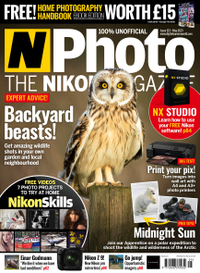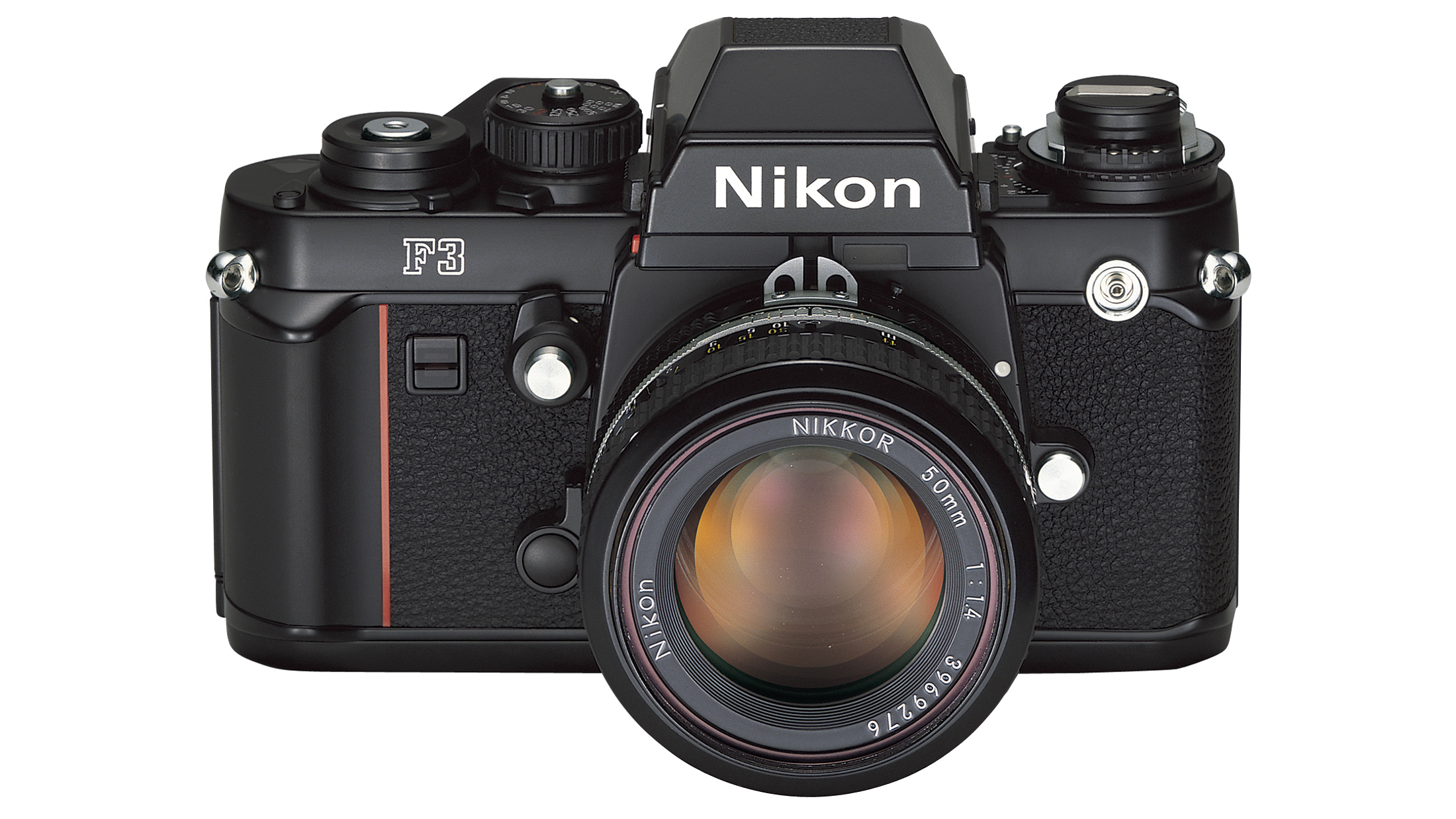Gary Cummins uses drones to shoot derelict buildings – but not in the way you might think…
Light painter extraordinaire Gary Cummins tells how he uses a drone and Lume Cubes to illuminate abandoned buildings from above
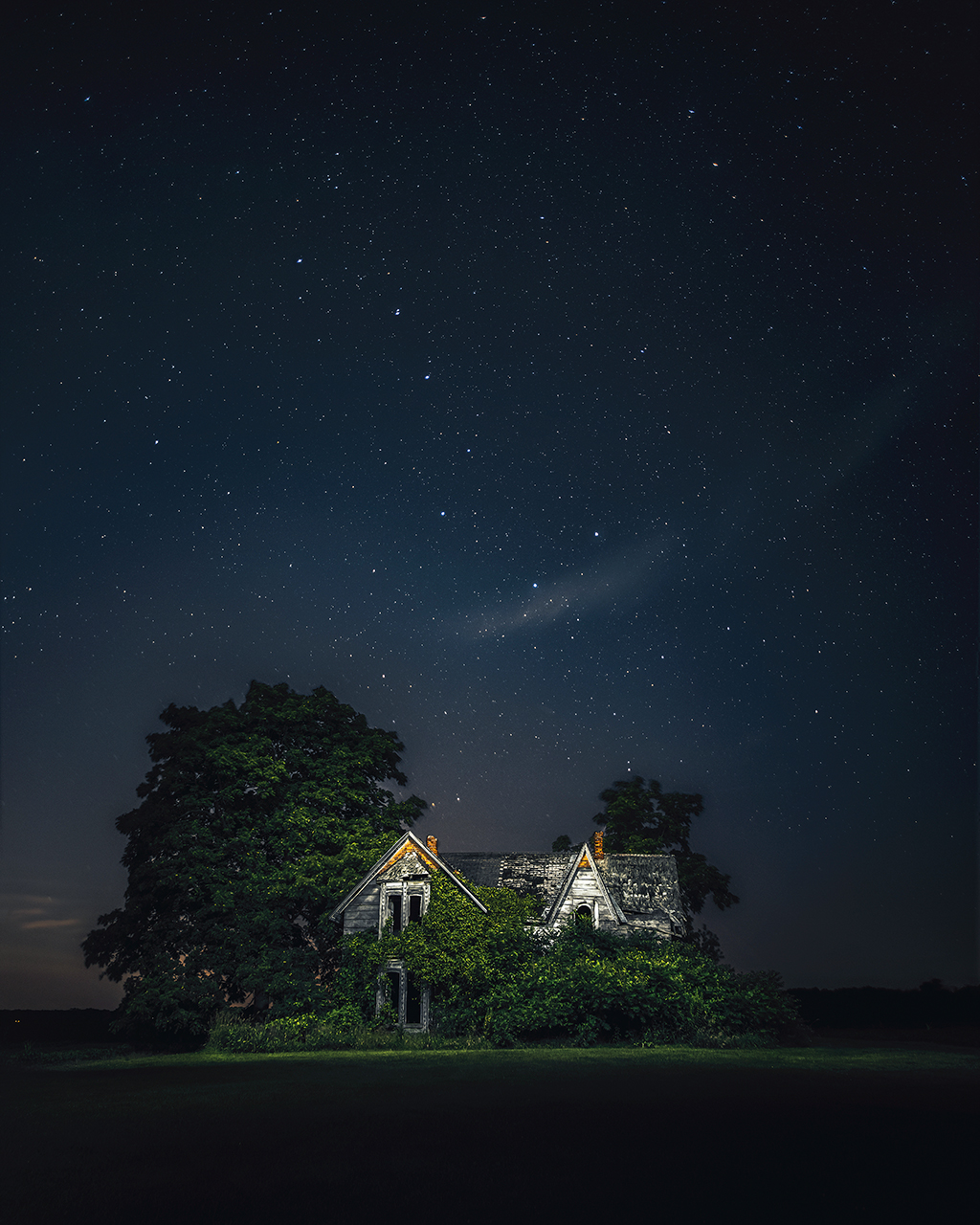
This series is all about getting out of the city and being beneath the stars. I live in Toronto, Canada, and it can get a bit hectic at times. So I drive for two or three hours to a location and capture old abandoned homes under the night sky. They have a story to tell: they were once full of people, places where families grew up together and worked the land. Now they are left to nature and time. I’m very lucky to have the chance to capture them in this unique way.
I have an affinity for astrophotography. I usually find myself in deserts or by an ocean while travelling. But where I live in Canada is far, far from such wonders, so abandonment has taken the forefront.
I can find myself shooting anywhere throughout the entire state of Ontario. Location scouting can be tedious, and driving for hours on end to, hopefully, come across something isn’t very appealing. Instead, I use Google Earth and Street View to find potential properties.
I love everything about it, from finding the run-down buildings in the first place to driving way out there, shooting and then editing them. It’s all a part of the process. It gets me away from the busy city and has almost become a form of meditation.
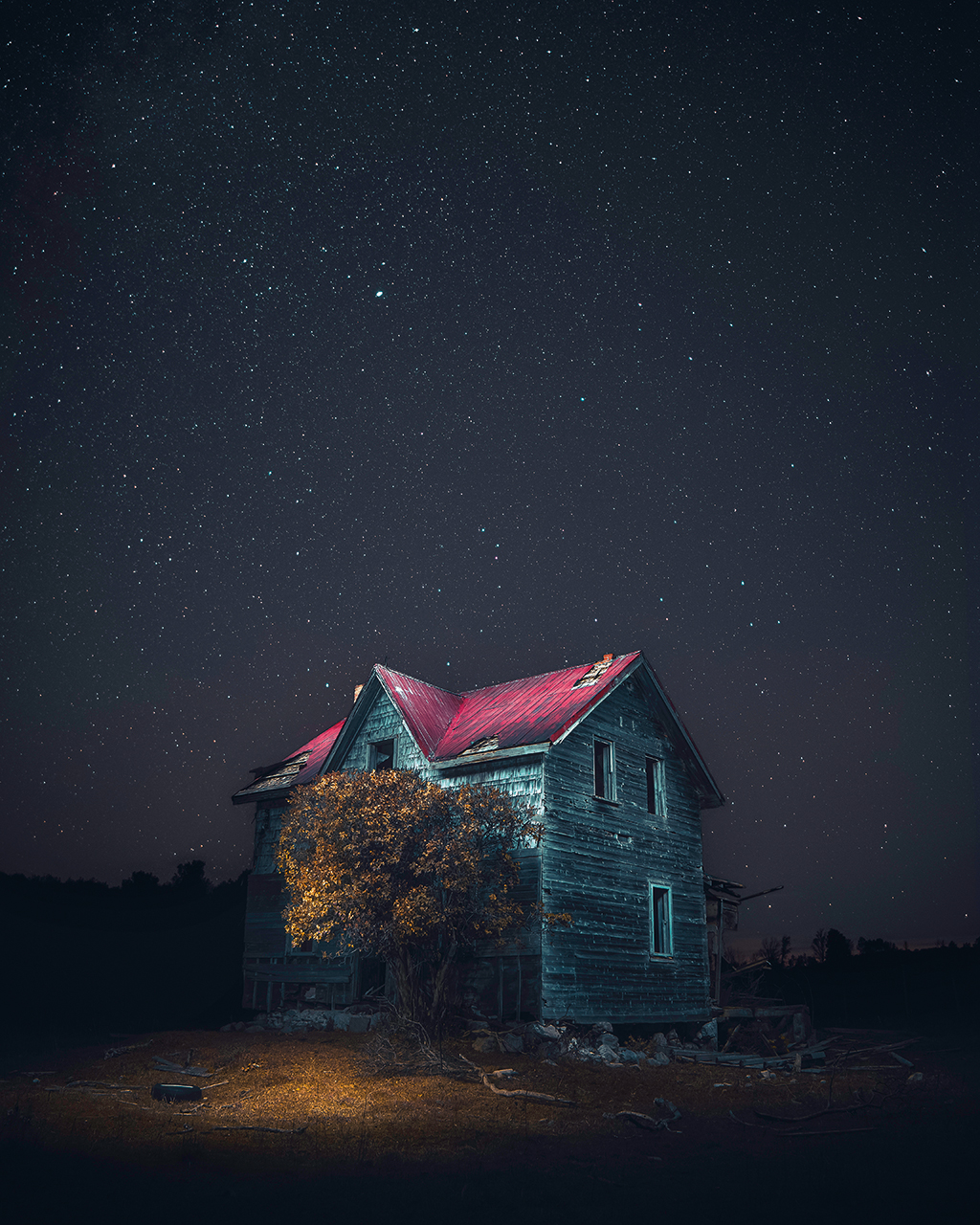
Start off strong
The series is still in its early stages – I only started in April of last year – and it will be ongoing as long as I can keep finding locations to photograph. As I have garnered more pieces, I’m considering the idea of creating a book, but I still have some work to do before I really start that endeavour.
Honestly, I never know how a shot will turn out. I have my settings dialed in and am happy with them, but it’s the light painting that’s the critical part. I have always been a fan of light painting night scenes. I first tried to light paint with a regular handheld LED light, but then decided to give lights mounted on a drone a go. I use a pair of Lume Cube 2.0s for this, mounted onto a DJI Mavic 2 Pro drone and pointed downward at a 45-degree angle.
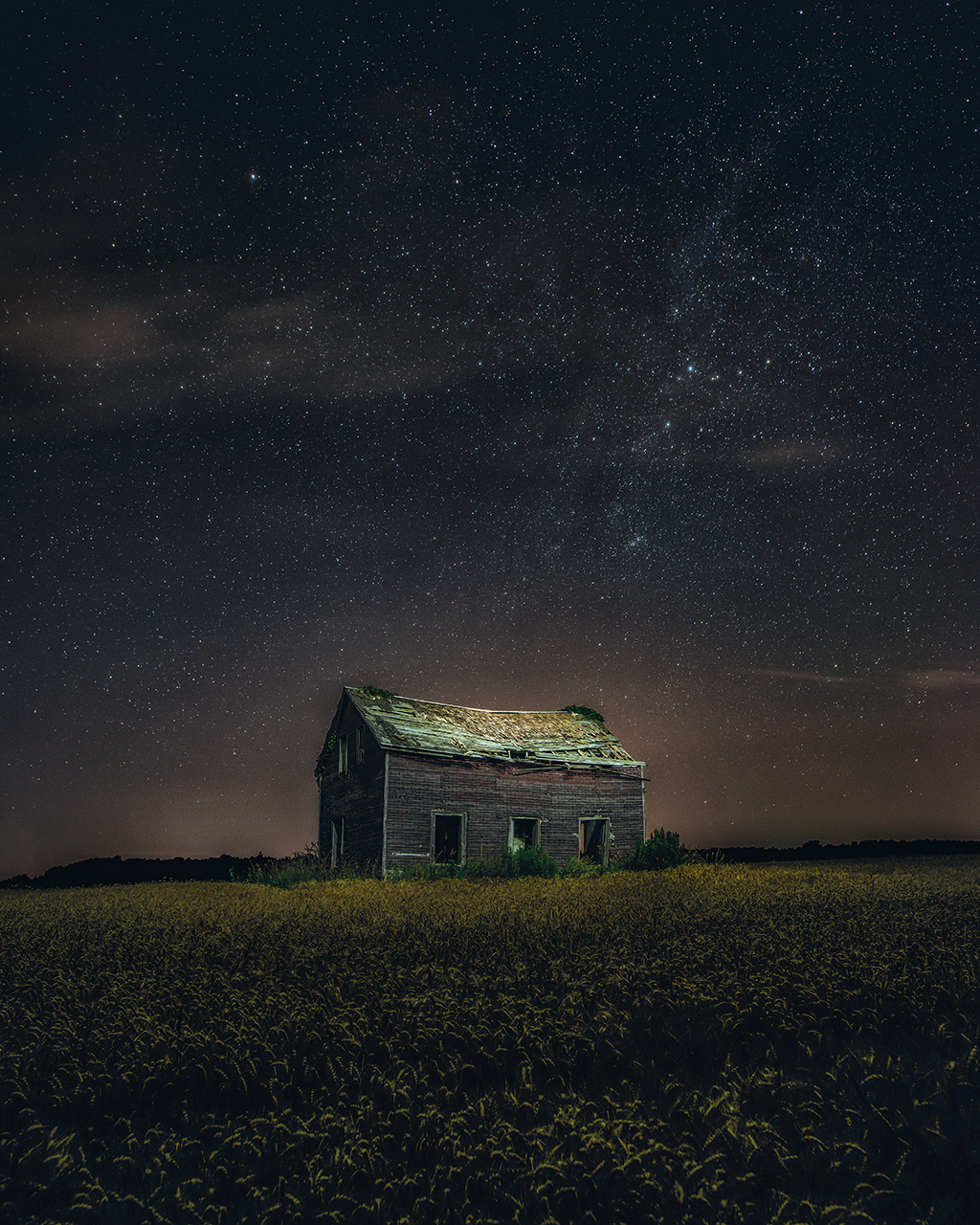
I take at least two separate images for each shot: one exposure of the house, light-painted by the drone, and a separate shot of the sky. By shooting the house and sky separately I’m able to drop the sky in during editing and eliminate the light streaks from the drone. As I’ve continued to develop my technique, I now take multiple photos of the house so I can light paint in sections. This makes it easier to remove the trails, as the area painted is below the drone’s flight path.
Get the Digital Camera World Newsletter
The best camera deals, reviews, product advice, and unmissable photography news, direct to your inbox!
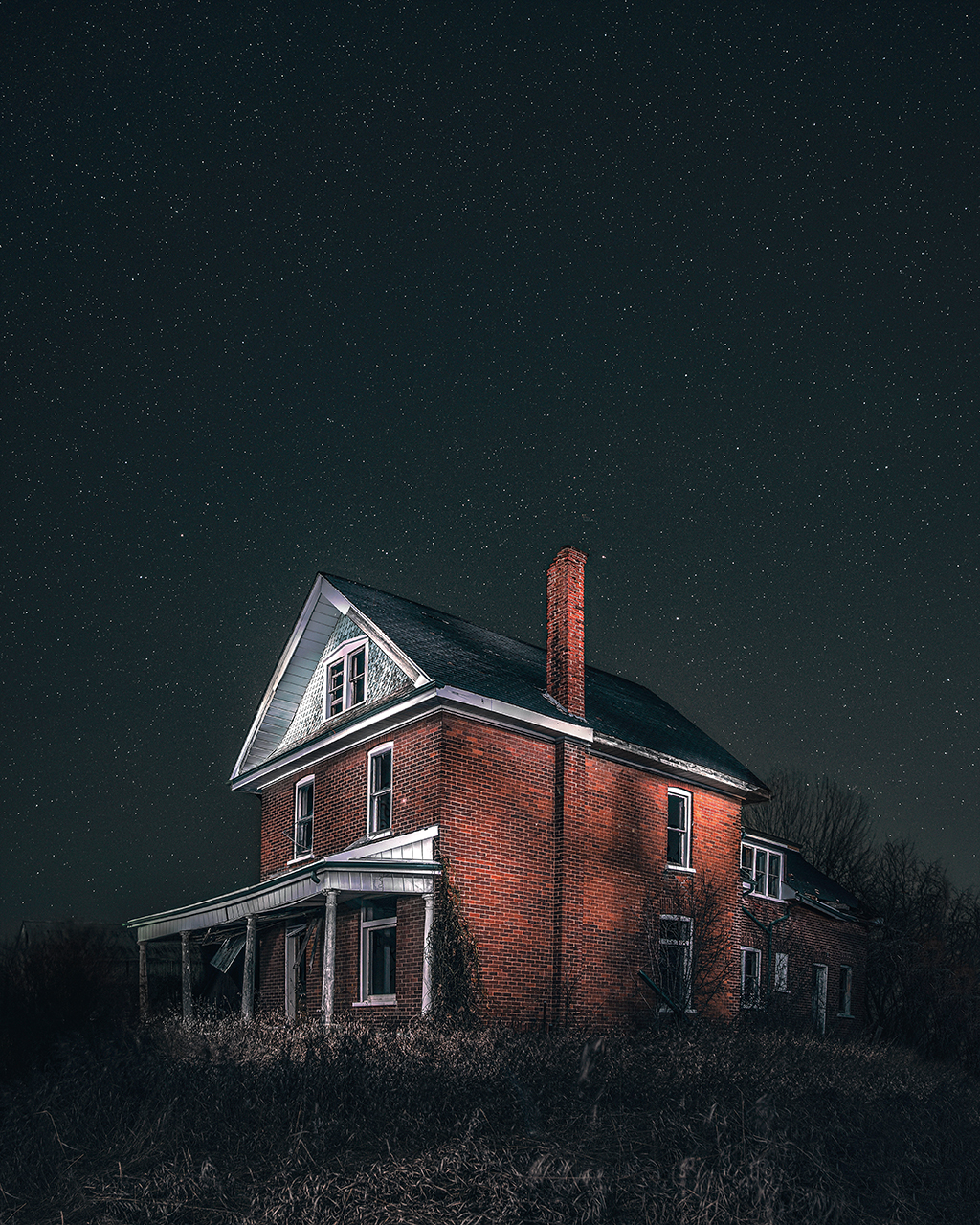
Piece by piece
When ready to edit I load the pictures as layers in Photoshop and set the blend mode to Lighten on each one. Then, to remove the light trails, I add a layer mask to each layer and gradually brush them out, one by one, with a black brush. This removes the trails without affecting the image.
I used my Nikon D810 along with a Nikon 20mm f/1.8 for these shots. I love my Nikon kit and the combo works for me. Plus the D810 is great for working in the cold. The batteries last in -20ºC with no problems.
I’m always respectful and seek permission from the landowners. As you might imagine, not all are open to allowing me onto their land, so if that’s the case I respect their decision and move on.
See more of Gary’s amazing images
Read more:
The best drones in 2021
Best Nikon cameras
N-Photo: The Nikon Magazine is a monthly publication that's entirely dedicated to Nikon users. For the best news, reviews, projects and more, subscribe to N-Photo today!
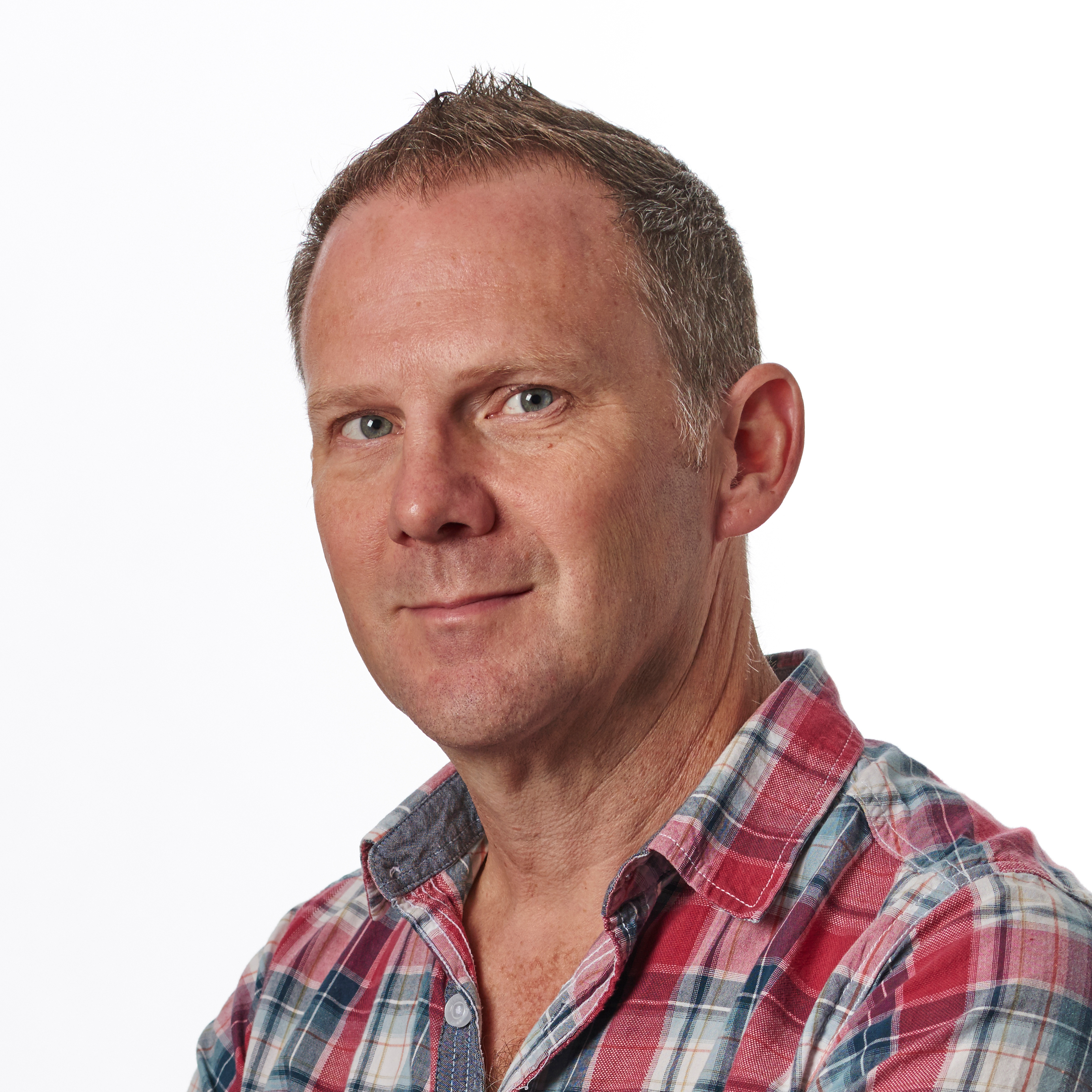
Prior to joining digitalcameraworld.com as Guides Editor, Adam was the editor of N-Photo: The Nikon Magazine for seven years, and as such is one of Digital Camera World's leading experts when it comes to all things Nikon-related.
Whether it’s reviews and hands-on tests of the latest Nikon cameras and lenses, sharing his skills using filters, tripods, lighting, L brackets and other photography equipment, or trading tips and techniques on shooting landscapes, wildlife and almost any genre of photography, Adam is always on hand to provide his insights.
Prior to his tenure on N-Photo, Adam was also a veteran of publications such as PhotoPlus: The Canon Magazine, so his wealth of photographic knowledge isn’t solely limited to the Big N.
